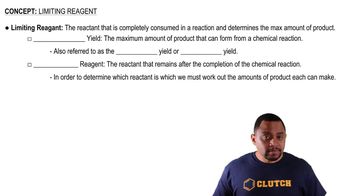Enzymes are often described as following the two-step mechanism:
E + S ⇌ ES (fast)
ES → E + P (slow)
where E = enzyme, S = substrate, ES = enzyme9substrate complex, and P = product.
(b) Molecules that can bind to the active site of an enzyme but are not converted into product are called enzyme inhibitors. Write an additional elementary step to add into the preceding mechanism to account for the reaction of E with I, an inhibitor.




